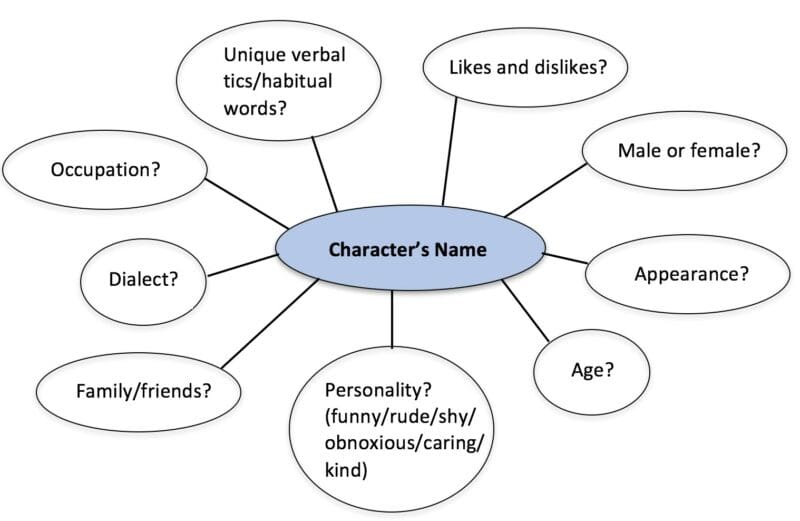In this post
Characterisation refers to the techniques that are used to create, define and portray a character.
In any piece of writing you will either have to write as yourself or as a fictional character. If you are writing about a real experience and you are the protagonist, the importance of characterisation is still the same as if you were making up a character from scratch. You must be able to make your character’s personality show in the story you are telling so that they are convincing to the reader. To do this, it is important that you are aware of the different skills and techniques of characterisation.
Think about the individual characterisation of characters and how you could illustrate this in your writing. Start to think of characters as individual people. People have their different ways of speaking, their different traits and different beliefs and values. You must be able to put this across with the characterisation of your characters in your writing.
You will need to begin thinking about your characters as soon as you begin planning your narrative writing piece. Think about what characters you need in your narrative; perhaps you are writing something from the romance genre and therefore require two protagonists that begin a romantic relationship; but who else will be in your narrative? A best friend perhaps? Or maybe the parents of the two protagonists? You need to think about everyone who is required for your particular story before you begin writing.
If you are writing about more than one character in a story, then make sure their characterisation is different. No two people speak the same, have the same beliefs and values etc. and therefore no two characters should be the same either. However, getting this across on paper can be tricky. Spider diagrams are a good way to plan the characterisations of your characters.

You are advised to allocate 1 hour to spend on Section C of the exam but only five minutes of this time planning. Therefore, you may not have enough time to be as thorough with the characterisations of your characters.
Useful tip: Spend an evening thinking and planning a range of different characters that would be suitable for multiple genres. This way, you will already have some ideas of characterisation before you go into the exam and so it will not take up a lot of your time coming up with convincing characters for your piece of narrative writing.
When you have made your mind up on who your characters are you have to start thinking about their relationships to each other. This involves thinking about the different ways in which they interact with one another. Perhaps your protagonist finds one of your other characters annoying and so acts rudely towards them? They don’t have to be generally rude and act this way towards the other characters in your story, it may just be this one. You have the freedom to decide anything about your characters so it can be a fun exercise – just make sure that they are convincing to the reader.
Characterisation and Speech
No two people are the same; their appearance is different and so is the way they speak. Everyone has an individual dialogue, dialect, verbal tics and habitual words that are unique to them. It is the same with characters. No two characters are the same in a story and therefore their speech and dialect will not be the same either. It is important that you give each of your characters individual characteristics.
Try giving each character unique verbal tics or habitual words. In reality people have certain ways of saying things and phrases that they repeat throughout the conversations that they have; therefore, your characters should have the same to make them realistic, to make them convincing. For example, a female character might repeatedly say the phrase ‘by all accounts’ before explaining anything; ‘by all accounts, he didn’t know how to fix it before he began trying’, ‘by all accounts I decided to leave’. This would be a characteristic unique to her personality – making her appear more realistic and convincing.
Think about the people you regularly speak to and if they have any unique verbal tics and habitual words when they speak. You could add these into any of your own characters. Individual people also construct their sentences differently; think about this when you’re including any speech in your narrative writing.



